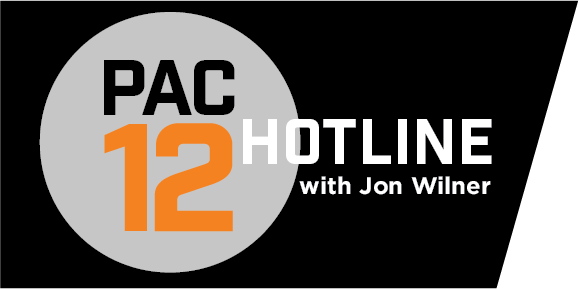Washington leads the way in a strong showing for the Pac-12 on the Hotline's preseason AP top-25 ballot. Another Pac-12 team cracks the top 10 ... Oregon?
Three key points on the ballot in general:
* As always, the preseason ballot is a projection of where I expect the teams to finish, not an assessment of the situation as it stands now, midway through training camp.
During evaluations, significant weight was assigned to quarterback play, experience on the lines of scrimmage and the schedule, including the cross-division rotations.
Noteworthy misses include Alabama-Georgia, Clemson-Miami, Ohio State-Wisconsin and Washington-USC.
* Yes, I picked a few sleepers — the only certainty to the season is the unexpected.
(UCF didn’t receive a single vote last year in either the AP or Coaches preseason polls; Florida State was No. 3 in both.)
The trick, of course, is picking the right sleepers. A 50 percent hit rate is perfectly respectable.
* My in-season ballot will be published on the Hotline each Sunday morning (PT), with the exception of the Week One delay for the Labor Day schedule.
Also considered (in no particular order): Oklahoma State, Northwestern, South Carolina, Iowa State, Boston College, Northern Illinois, Fresno State, Navy, West Virginia, LSU, Kansas State, Toledo, Utah, Mississippi State, Iowa and Memphis.
1. Alabama: Gave serious thought to placing Clemson in the top spot, but the Crimson Tide’s schedule (no Georgia, no Florida, Auburn at home and LSU in a down cycle) is mildly challenging, at best. The defense will have seven or eight new starters. If only a few of them had potential, the Tide might have a chance to make something of its season.
2. Clemson: Slotted the Tigers fourth in my early (January) forecast, but that was before knowing the entire defensive line would return. Combine a front for the ages with experience in the back seven and the offensive line — not to mention quarterback Kelly Bryant — and Clemson is a CFP frontrunner.
3. Wisconsin: With so much attention on the chaos at Ohio State, it’s easy to overlook the drama-free Badgers and their terrific tandem of quarterback Alex Hornibrook and tailback Jonathan Taylor. The first-class offensive line returns intact, and the schedule is favorable. If the defense is merely solid, Wisconsin should contend for a playoff berth regardless of developments in Columbus.
4. Miami: Expecting the Canes and their 14 returning starters to handle LSU in the opener and then roll into the Florida State showdown undefeated. The Clemson cross-division miss sets up an ACC title game with a semifinal berth at stake. Mark Richt won nine games in his first year in Coral Gables and 10 in his second. He’ll get to 11 this season.
5. Georgia: The Dawgs lost a load of talent but return more than enough to keep their momentum alive and contend for another CFP berth. Quarterback Jake Fromm is back, as is most of the offensive line and all but one of the top receivers. (There is never a shortage of tailbacks in Athens.) We’re figuring on a few early rough patches for the defense, and the schedule is sneaky-tough.
6. Michigan State: The Hotline correctly pegged the Spartans’ upside surprise last season, but there’s no overlooking them this fall: 19 starters return, including quarterback Brian Lewerke, from a team that won 10 games and beat Michigan and Penn State. Only a brutal division can stop MSU from making a serious playoff run.
7. Washington: The best blend of talent and experience in the Pac-12, particularly on the lines of scrimmage and the defensive backfield. A victory over Auburn in the opener would vault UW into the CFP race, but navigating the Pac-12 with fewer than two losses will be tricky.
8. Ohio State: If Meyer coaches, the semifinals are well within reach despite a schedule that includes road/neutral site tangles with TCU, Penn State and Michigan State. If Meyer isn’t on the sideline, OSU could fall to the second tier. He means that much.
9. Oregon: Sleeper No. 1. With one of the top quarterbacks in the country (Justin Herbert), a veteran offensive line, experienced defense (seven returning starters), established coordinators and a favorable schedule — no USC; Stanford and Washington at home — the Ducks should jump back onto the national stage.
10. Penn State: Top 10 in the nation but only the third- or fourth-best team in the Big Ten East. Without Saquon Barkley, the burden falls heavily on quarterback Trace McSorley. His line and wideouts are good enough to win the division, but we’re skeptical of the defense. The Nittany Lions lost eight starters, including the entire secondary.
11. Oklahoma: Rare is the team that loses a quarterback of Baker Mayfield’s talent and is able to maintain playoff-level performance. (Clemson did it in the post-Deshaun Watson season, but OU doesn’t have the Tigers’ defense.) The Sooners will take a half-step back, and perhaps even a full one, in coach Lincoln Riley’s second year.
12. UCF: Everything will be different for the Knights, not only because of the new coach (Josh Heupel) and nine new starters but because of the expectations generated by their 13-0 record and (comical) claims on the national title. At least quarterback Milton McKenzie is back to guide UCF through what should be a fascinating season.
13. TCU: Initial assessment of the Frogs (in January) was lukewarm, but a thorough summer inspection prompted an elevated position: Experience, playmakers and schedule all align for a first-rate season. Taking one out of two in the September back-to-back against Ohio State (neutral) and Texas (road) is essential.
14. Auburn: The Tigers typically follow a superior season with a forgettable one, but the pieces are in place to build on the 2017 success with quarterback Jarrett Stidham and a loaded front seven. The SEC rotation does them no favors, however, with Georgia and Alabama on the road in the final weeks.
15. Boise State: With 10 returning starters on defense, senior quarterback Brett Rypien and a trip to Oklahoma State providing the fuel, the Broncos are set for their best season of the Bryan Harsin era. A few quality nonconference wins by other teams in the MW would help their cause by elevating the conference’s rep.
16. Michigan: It’s Year Four of the Harbaugh era, the year the Wolverines have been pointing to since his arrival. They have a talented quarterback (Shea Patterson, from Ole Miss) and 17 returning starters, but the schedule is ridiculous: Notre Dame, Michigan State and Ohio State on the road; Wisconsin and Penn State at home.
17. Florida: Sleeper No. 2. Projection is based on Dan Mullen’s skills as a play caller and his comfort level in Gainesville; the presence of 18 returning starters, including the entire offensive line; a wide-open division (beyond the top spot); and a schedule that’s made for an upside surprise. The Gators won four games last year; expect them to double that total, at least, this fall.
18. Stanford: Tailback Bryce Love, quarterback K.J. Costello and a stacked line make this one of Stanford’s most talented offenses of the David Shaw era, but the Cardinal will have to average 35 or 40 points if the defensive flaws (line and backfield) aren’t resolved. Even years are typically difficult for Stanford with trips to Seattle, Eugene and South Bend.
19. Virginia Tech: Coach Justin Fuente has won at least nine games in each of the past four seasons (two at Memphis, two at VaTech). No reason to expect anything less from his Hokies this fall with several options at quarterback, including 2017 starter Joshua Jackson. The schedule, albeit challenging, does not include Clemson.
20. Florida Atlantic: Sleeper No. 3. Like him or despise him, Lane Kiffin is a competent coach, and his Owls are positioned for another 10-win season (or better). If the season unfolds in that fashion and he stays out of trouble with his mouth, Kiffin will be coaching somewhere in the Power Five in 2019.
21. Notre Dame: I’ll admit to waffling on the Irish. They’ve recruited well, have an experienced roster and play only four true road games. But is Brandon Wimbush the answer behind a rebuilt line? And the schedule … it’s difficult and potentially grueling if two or three teams prove better the anticipated.
22. USC: Speaking of schedules: No team faces a more difficult September than the Trojans, who face Stanford, Texas and Arizona on the road in the opening month. Good thing they have a veteran quarterback to navigate enemy turf, err … Sure, much of the season hinges on the play of rookie JT Daniels, but not all of it. The roster is loaded everywhere else.
23. Texas: The Hotline whiffed on UT last season, expecting a bit more than the Longhorns provided in Tom Herman’s first season. I’ll take the mulligan and figure on eight or nine wins and a clear indication of ascent. Aiding the momentum: Most of their toughest game are at home.
24. Arizona: Coach Kevin Sumlin stepped into a favorable situation with a gifted quarterback, veteran defense and highly-manageable schedule. Don’t discount the Wildcats, who miss Stanford and Washington and get USC and Oregon at home, as a contender in the South if Khalil Tate develops his pocket efficiency.
25. Florida State: Wasn’t overly impressed by Willie Taggart’s in-game tactics last season in Eugene, and that could be an issue any of the four or five weeks the Seminoles face an opponent with high-level talent. Wouldn’t be surprised by either extreme: a top-10 season, or a belly flop.

